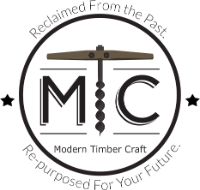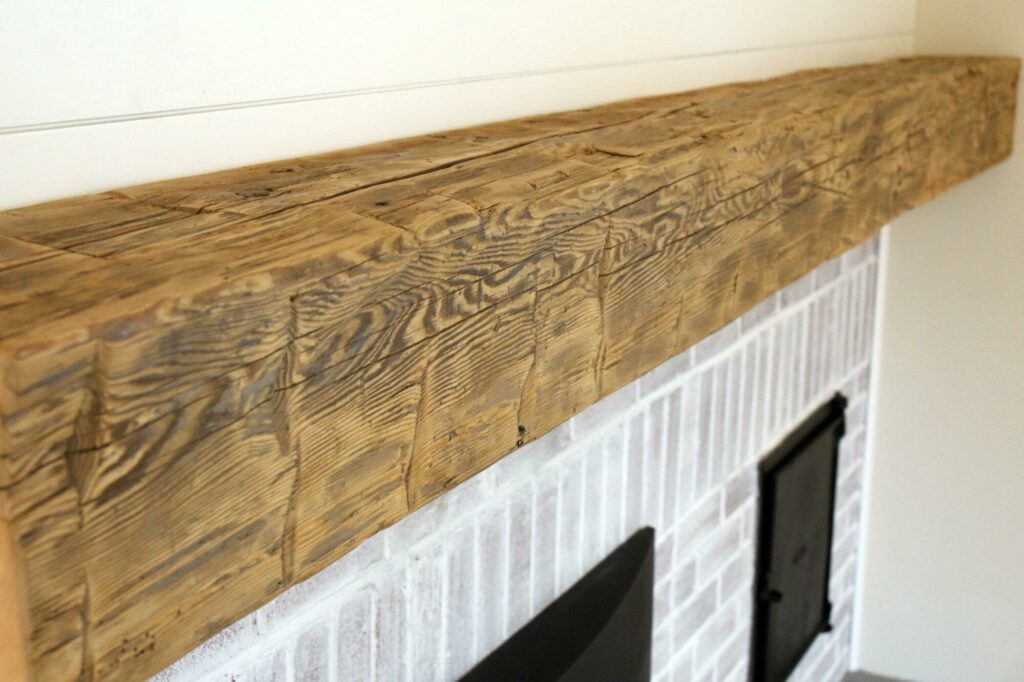The word focus means “fireplace" or "hearth” in Latin. A fireplace is still the focal point of any home, drawing the eye to its warmth and beauty even when the fire is out. So, if you are considering placing a mantel over your fireplace, pay special attention to the architectural detail and make it a focus for family and friends for years to come.

History Of Fireplace Mantels
Prior to the 1800s, fireplaces were fully functional, used to heat the home, bake bread, warm mittens, and cook meals. In many cases, users could actually walk into the fireplace to tend the fire, as they were deeply recessed within a brick wall.
During the 19th century, fireplaces transformed into a more aesthetic feature of the home. Builders added decorative panels on either side of the opening, with mantel shelves installed above. In the Victorian era, known for its highly ornamental style, the mantel shelf became a place for artwork or other decor. In many cases, that remains a primary purpose for hanging a mantel shelf.
Choosing The Right Style
Today's mantel has become an expression of individuality. Homeowners have a variety of options when selecting a mantel. Here are some of the more popular styles for fireplace mantels.
Modern
The modern home look incorporates clean lines and a minimalist aesthetic. Modern fireplace mantels are simply designed and understated, often consisting of a narrow shelf mounted above a flat fireplace opening. Popular materials used to create the modern fireplace mantel include white paint, natural wood, and stone.

Rustic
The rustic style combines traditional and modern elements, offering a rugged, natural look. A rustic fireplace mantel is typically wooden and likely exhibits natural features of the material, such as wormholes, wood knots, and saw marks. Hand-hewn beams or reclaimed barn wood saw-cut shelves are popular options for this style. Rustic mantels may be stained to match other room features or simply coated to preserve their natural appearance.

Victorian
The Victorian era was born during the Industrial Revolution, when a prosperous middle class emerged alongside a growing capacity to mass-produce furniture. The new middle class sought out "luxurious" but affordable home decor with ornate carvings and embellishments. Accordingly, those details characterize the Victorian-era fireplace mantels we see today.
Colonial
Old-world craftsmanship and historic Puritan values influence the Colonial style home decor. A Colonial mantel exhibits a simple yet elegant design, at times featuring decorative carving and columns on either side of the fireplace opening. Symmetry and formality are two keys to the Colonial aesthetic.
Classical
The classical style refers to architectural designs from ancient Greece and Rome. Elements of those cultures are still visible in today's classical fireplace mantels, including the use of marble or other stone and a preference for the color white. Carved columns provide a border for classical mantels, creating a setting that is elegant and austere.
Choosing The Right Fireplace Mantel Material
By far the most common material for a fireplace mantel is wood. Whether made of an ornately carved slab of oak or mahogany or built with a piece of reclaimed barn wood, the material has a warm, natural beauty. The shelf can be stained or painted, and can be designed to complement almost any architectural style.
Alternate material options include metal, marble, granite, cast stone, or composite materials such as medium-density fiberboard or architectural glass. Typically the style will suggest the best material to use, but cost may be a factor in your decision. The best "bang for the buck" is typically wood versus stone or metal.
Determining The Right Size Fireplace Mantel Shelf
The proper size of a fireplace mantel depends on a few key considerations. To start, your mantel depth and location must be in compliance with the federal fire safety code, which stipulates any combustible material must be a certain distance away from the fireplace opening based on shelf depth. (A minimum clearance of six inches from the fireplace opening is required for any depth.) Before you install, think about state and local codes that may also impose stricter limitations.
It’s also important to consider room dimensions. Choose a fireplace mantel that will fit into the space without overpowering the entire interior design. If you’re building a new home, you have flexibility in your fireplace appearance. But if you’re redesigning an existing fireplace, you’ll be constrained by the current opening. For instance, if the firebox is not a standard size or shape, you may have to consider a custom-made mantel.
Thus the depth and height of your fireplace and the position of the shelf will determine the size of the shelf you need.
Environmental Impact Of Installing A Fireplace Mantel
Building projects use natural resources and create waste, but there are many ways that homeowners can minimize the negative environmental impact of a mantel project. Using recycled construction materials, such as reclaimed wood, reduces waste and gives new life to an abandoned natural resource. Another sustainable design option is green architectural glass made of recycled glass and other renewable materials.
Once your new mantel is in place, you’ll have an attractive piece of furniture at the heart of your room. Whether you adorn your mantel with a single vase of flowers, an eye-catching piece of art, or a collection of family photos, the right fireplace mantel will enhance the overall appeal of your home and increase your quality of life.


Written by Jake Park
Jake is the founder of Modern Timber Craft and is a seasoned reclaimed woodworking enthusiast with over 20 years experience.


